Contentful personalization brings together the agility of modular content management with AI-powered insights to provide more accurate digital experiences.
At its core, Contentful personalization incorporates AI capabilities such as Ninetailed to examine real-time data—user behavior, location, device type, or previous interactions—and serve dynamic content that syncs with those findings.
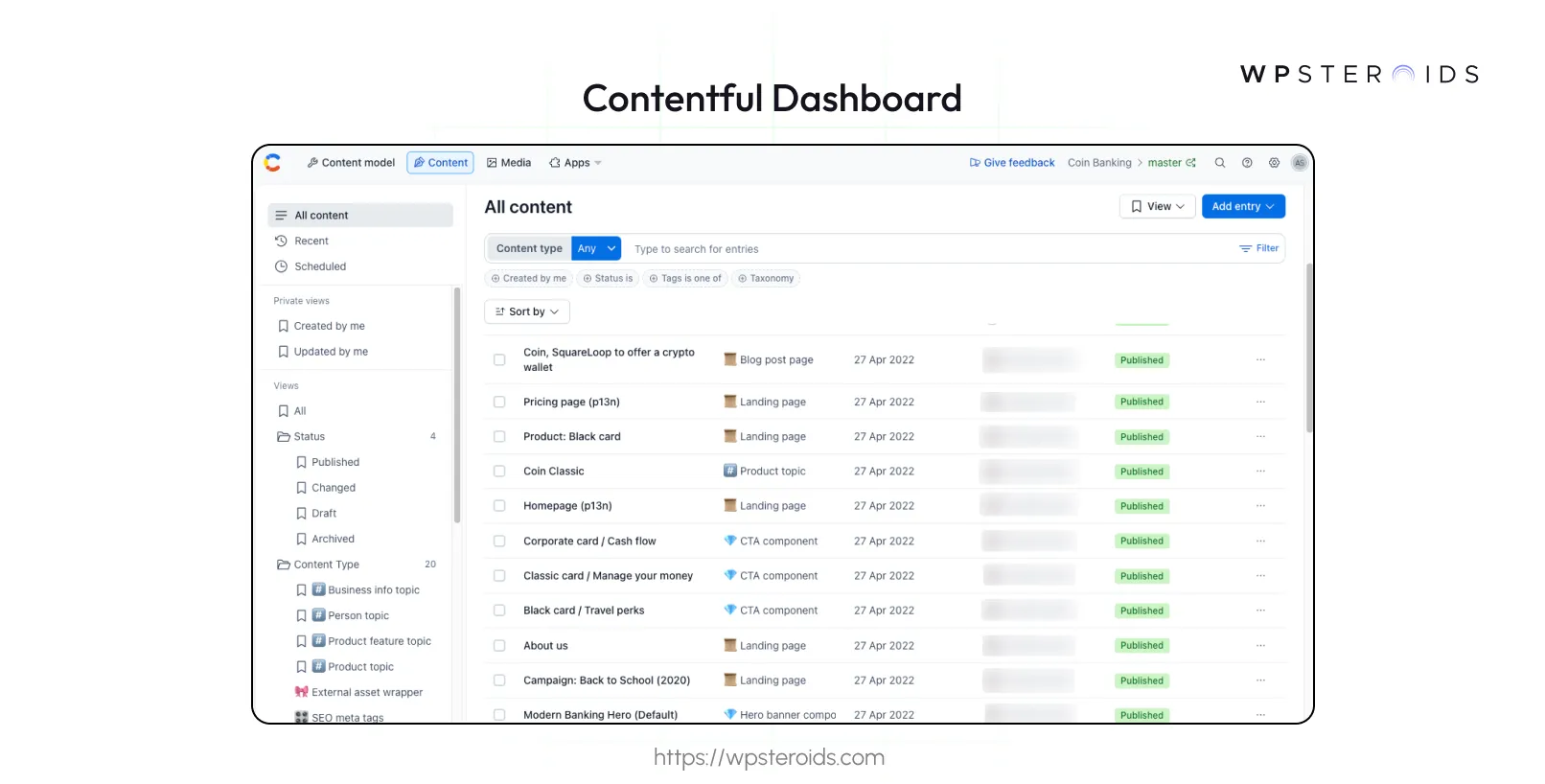
What Distinguishes Contentful Personalization?
Teams are able to work with content as reusable building blocks, so it's simpler to customize experiences throughout channels without having to rebuild from scratch. Developers and marketers can work together within the same platform, eliminating siloed workflows.
Changes to a component—such as an offer banner or email template—are able to cascade dynamically wherever that content is being used, keeping consistency while saving time.
Whereas AI does the heavy work of
predictive analytics
, the system is transparent and manageable. Companies maintain control, tweaking rules or priorities as necessary. And since it's designed to scale, Contentful handles personalization for any-sized audience, fine-tuning content delivery even as traffic increases.
Long answer short: it's a balance, using automation for efficiency while having teams remain in the driver's seat, keeping stories personalized and purposeful.
Key Focus Areas
- Real-Time Use of Data: Contentful's platform operates in real time on behavioral signals (e.g., clicks, cart additions), enabling brands to dynamically adjust content.
- Machine Learning Integration: Tools such as Ninetailed leverage ML algorithms to forecast user preferences, streamline A/B testing, and determine content variants. This minimizes guesswork and the need for manual rule-definition.
- Content Orchestration: Contentful's composable structure separates content from presentation, allowing easy reuse of assets across channels. A product description in Contentful can be tailored for use in email campaigns, mobile applications, and in-store kiosks without repetition.
Contentful Personalization in Modern Workflows
Personalization has come a long way in the last decade, from basic segmentation to AI-powered hyper-personalization.
Contentful has played a key role in filling the gap between content management and next-generation personalization. Legacy CMS platforms viewed content as fixed "blocks," and developers had to hard-code personalized variations.
Contentful's composable nature, coupled with AI solutions such as Ninetailed, enables teams to:
- Centralize Data: Consolidate customer profiles from CRM, analytics, and third-party tools into one source.
- Experimentation Automation: Conduct multivariate experiments across channels independently of IT.
- Future-Proof Strategies: Leverage nascent trends (e.g., voice search, AR commerce) by repurposing modular content building blocks
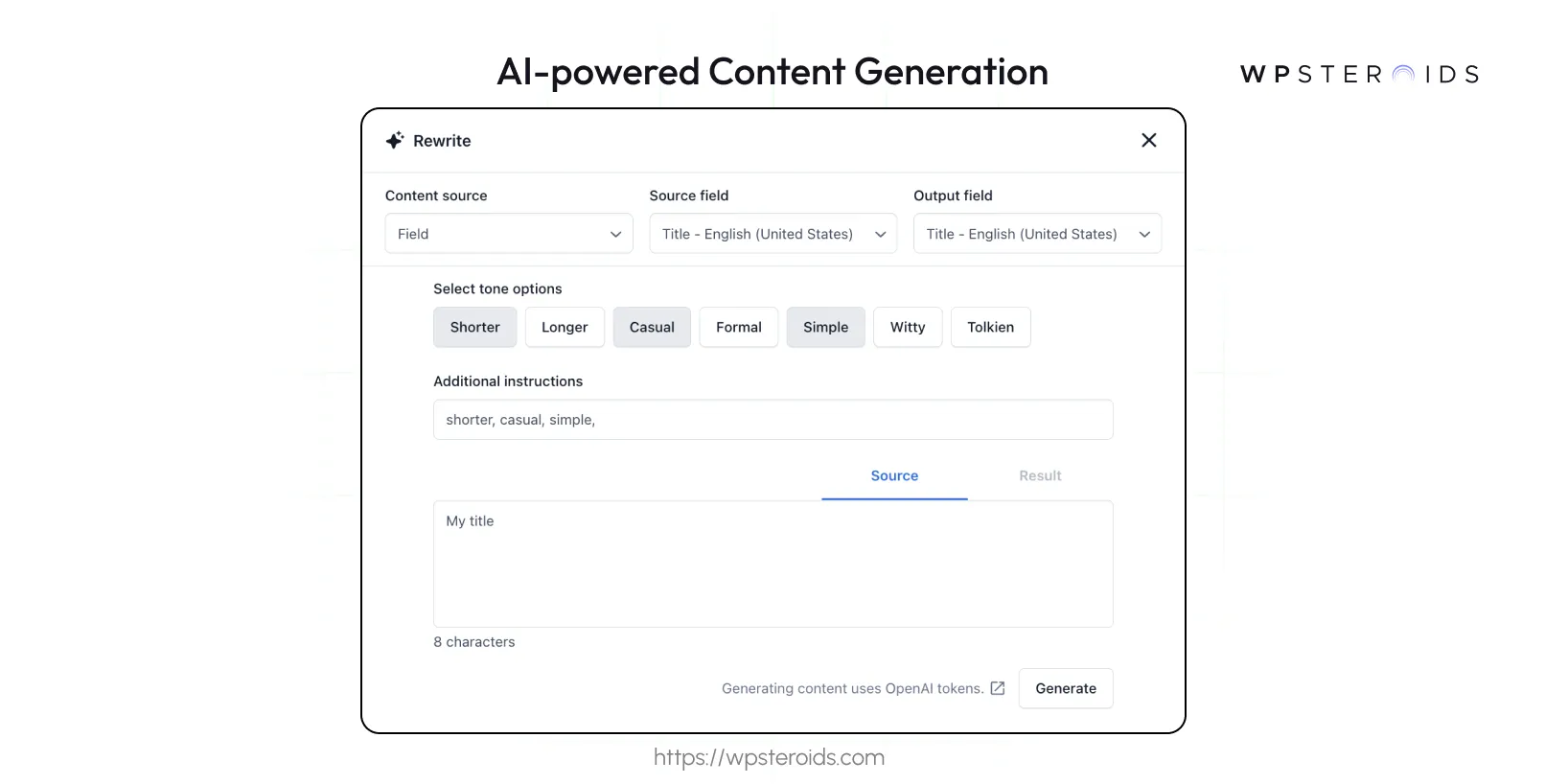
Why You Need Contentful Personalization
Exceeding Customer Expectations
This is due to the deluge of digital-first experiences, where the likes of
Netflix and Spotify
have set a high bar for personalized content.
Improved Conversions
Personalization has an immediate revenue impact by driving users to the right offers. For example, wash rug business
Ruggable utilized Contentful's AI-native features
to personalize its home page based on user segments like "dog owners" and "cat lovers."
By presenting breed-specific product photos and targeted messaging, Ruggable realized a 25% boost in conversions and a 700% boost in click-through rates.
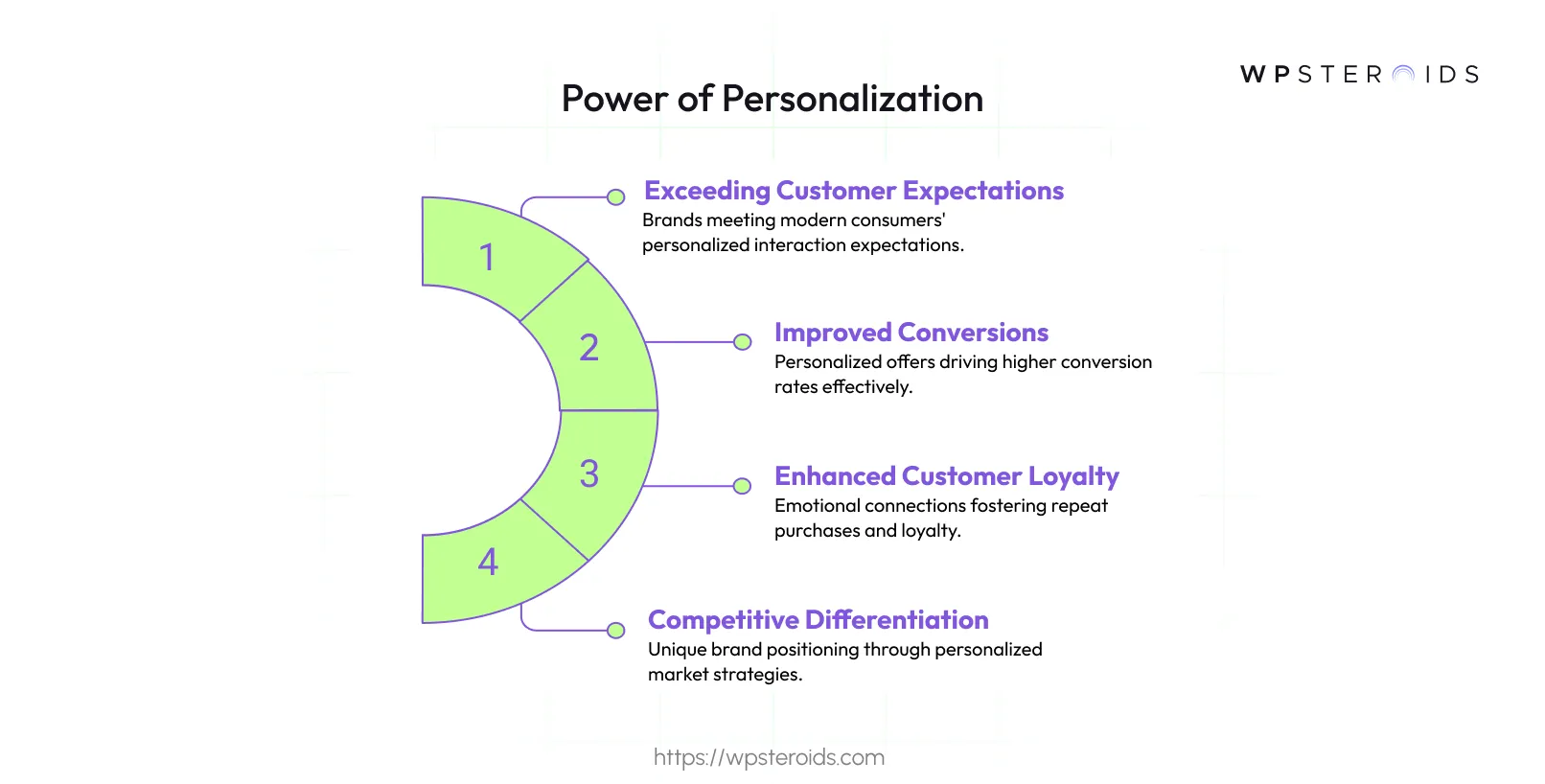
Enhanced Customer Loyalty
Contentful personalization forms emotional connections that drive repeat purchases. Kraft Heinz transformed its digital strategy by turning static product pages into interactive quizzes.
Consumers answering questions like "What's your cooking style?" were shown recipe ideas along with personalized product suggestions. This boosted engagement by 30% and turned casual consumers into devoted evangelists.
Competitive Differentiation
In competitive markets, personalization is what makes brands stand out. Personio, an HR software provider, was competing fiercely in both enterprise and SMB segments.
With Contentful's personalization, they
personalized landing pages
—highlighting compliance features for enterprises and price for SMBs—and achieved a 46% increase in conversion among small businesses and a 45% increase in enterprise demo requests.
Such precision turns brands into customer-centric innovators, very much unlike generic messaging-based rivals.
When Should You Implement Contentful Personalization?
Personalization is not a blanket answer. Understanding when to use it makes sure you're spending resources judiciously and getting tangible results. What follows are important situations where Contentful's personalization features bring added value, along with indicators that your company may benefit from them.
Scaling E-Commerce Experiences with Contentful Personalization
Contentful personalization's AI capabilities examine user behavior to drive automated recommendations and pricing rules, minimizing manual work.
If your website is having trouble converting visitors or keeping customers, personalization can fill the gap. For instance:
- Personalized Product Recommendations: Display users' products based on their browsing history. A customer who looks at hiking boots may be shown backpacks or moisture-wicking socks.
- Dynamic Pricing: Update prices in real time according to demand, user location, or loyalty level. For example, provide a discount to first-time visitors or high-end members.
- Cart Recovery: Inform users of abandoned items through email with customized incentives (e.g., free shipping or a temporary discount).
Omnichannel Marketing with Contentful Personalization
If your customers engage with your brand across multiple channels (website, app, email, store), but the experience isn't cohesive, omnichannel personalization brings these touchpoints together. For instance:
- A customer browses winter jackets on your mobile app but doesn't buy. Subsequently, they're sent an email highlighting those jackets with a store locator for locations nearby.
- In-store shopping initiates follow-up emails with suggested complementary products.
Its composable architecture allows you to reuse content across channels, maintaining consistency while adapting messages to each channel.
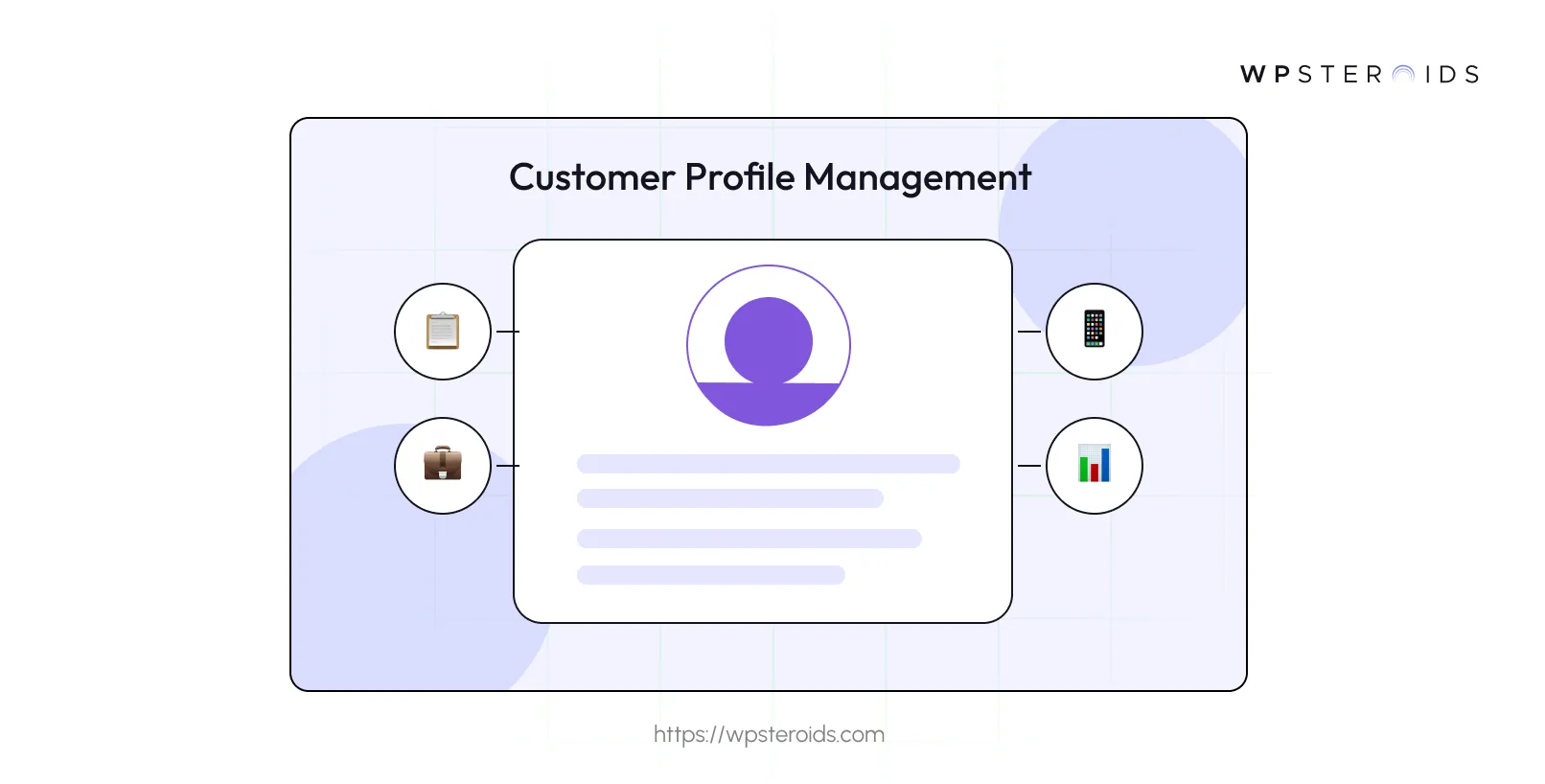
Customer Journey Optimization with Contentful Personalization
With Contentful’s Personalization, you can monitor user behavior to automatically present stage-specific content, such as presenting demo sign-up CTAs to users who view pricing pages.
Customers progress through phases: finding your brand (awareness), comparing alternatives (consideration), and purchasing (decision). Personalization ensures the appropriate content finds them at every stage:
- Awareness: Blog articles or videos that speak to their pain points (e.g., "How to select the best running shoes").
- Consideration: Comparison guides or customer reviews.
- Decision: Limited-time offers or personalized demos.
Signs Your Business Needs Contentful Personalization
Uncertain whether it's time to personalize? Look for these warning signs:
- Waning Engagement: Sites with high bounce rates or low time-on-site indicate generic content is not engaging.
- Abandoned Carts: Shoppers add products but do not follow through. Personalized notifications or rewards (e.g., free shipping) can reclaim revenue.
- Broken Customer Journeys: When users experience inconsistent messaging between channels (e.g., email offers are not consistent with website messaging), trust is lost.
- Flat Conversions: Traffic increases, but sales stagnate. Personalization enhances targeting to convert visitors into customers.
Why Act Now? Overlooking such signs means losing business to competitors who provide customized experiences.
Contentful's personalization features assist you in diagnosing problems, testing fixes, and amplifying strategies effectively.
Types and Features of Contentful Personalization
Contentful offers a mix of foundational methods and advanced tools to personalize content, catering to businesses at different stages of their personalization journey.
Types of Contentful Personalization

Content Personalization
- Definition: Tailoring text, images, videos, or CTAs to match individual user preferences or behaviors.
- How Contentful Personalization Enables It
- Dynamic Content Modules: Swap headlines, banners, or product grids based on user data (e.g., location, browsing history).
- A/B Testing: Use tools like Ninetailed to test variations (e.g., “Get 10% Off” vs. “Free Shipping”) and identify top performers.
- Audience Segmentation: Group users into categories (e.g., “first-time visitors,” “loyal customers”) to serve targeted messaging.
- Benefits:
- Boosts engagement by reducing irrelevant content.
- Simplifies content management through modular, reusable components.
Omnichannel Personalization
- Definition: Delivering cohesive, personalized experiences across all customer touchpoints (web, mobile, email, in-store).
- How Contentful Personalization Enables It:
- Composable Architecture: Manage content once in Contentful and deploy it across channels (e.g., a product description adapts to web, app, and email).
- Unified Customer Profiles: Sync data from CRM, email, and apps to maintain consistency (e.g., cart reminders via email after a user browses on mobile).
- Benefits:
- Reduces friction in the customer journey.
- Builds brand trust through consistent messaging.
E-commerce Personalization
- Definition: Customizing shopping experiences to drive conversions and loyalty.
- How Contentful Personalization Enables It:
- Product Recommendations: Use AI to suggest items based on browsing/purchase history (e.g., “Customers who bought this also bought…”).
- Dynamic Pricing: Display location-based discounts or loyalty-tier pricing.
- Cart Recovery: Trigger personalized emails with incentives (e.g., free shipping) for abandoned carts.
- Benefits:
- Increases average order value (AOV) and repeat purchases.
- Integrates seamlessly with platforms like Shopify or Salesforce Commerce Cloud.
Hyper-Personalization
- Definition: Using real-time data and AI to create one-to-one experiences at scale.
- How Contentful Personalization Enables It:
- Behavioral Triggers: Adjust content based on real-time actions (e.g., showing raincoats to users in rainy locations).
- Predictive Analytics: Anticipate needs (e.g., recommending a laptop bag to a user who just bought a laptop).
- Advanced Segmentation: Combine multiple data points (e.g., past purchases + device type + time of day).
- Benefits:
- Delivers “wow” moments that deepen customer loyalty.
- Requires minimal manual effort once AI models are trained.
AI and Personalization
- Definition: Leveraging artificial intelligence to automate and optimize personalization efforts.
- How Contentful Personalization Enables It:
- Machine Learning Models: Analyze vast datasets to predict user preferences (e.g., Ninetailed’s AI-driven recommendations).
- Automated Segmentation: Dynamically group users based on behavior (e.g., “high-intent shoppers”).
- Real-Time Adjustments: Update content instantly (e.g., swapping holiday promotions based on inventory levels).
- Benefits:
- Scales personalization without proportional increases in workload.
- Uncovers hidden patterns in user behavior.
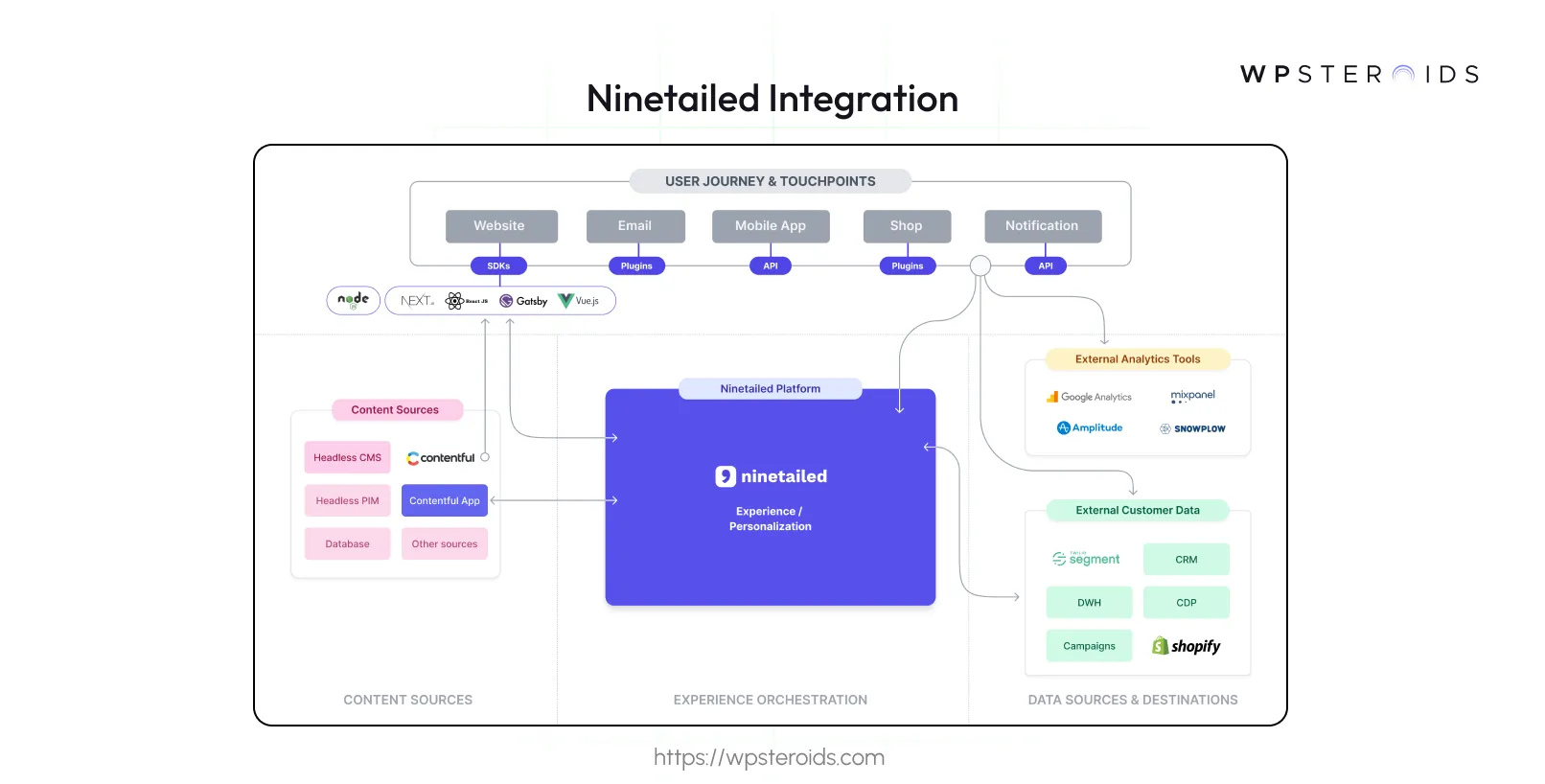
Key Features of Contentful Personalization
- CMS Integration: Contentful lets you personalize content directly within its platform. For example:
- Swap out hero banners or CTAs for different audiences without rebuilding pages.
- Create product grids that automatically update based on user preferences (e.g., "Trending in your area").
- AI-Native Tools (Ninetailed): Ninetailed, a tool integrated with Contentful, simplifies advanced personalization:
- No-code A/B testing: Test two versions of a page to see which performs better.
- Audience segmentation: Group users by behavior (e.g., "Frequent shoppers," "Cart abandoners").
- Dynamic content: Automatically show different content to different segments (e.g., dog owners vs. cat owners).
- Omnichannel Orchestration: Deliver consistent experiences across all platforms:
- A user browses products on your app, receives a follow-up email, and sees the same items promoted on social media.
- Update content once it is in Contentful, and it adapts to web, mobile, or in-store screens.
- Real-Time Data Utilization: Contentful uses live data to personalize experiences instantly:
- Show raincoat ads to users in rainy locations.
- Adjust homepage banners based on trending products in the user’s region.
Advanced Use Cases
- Hyper-personalization: Brands like Ruggable take personalization further by combining multiple data points:
- Display breed-specific dog beds to users who previously bought pet toys.
- Show location-based offers (e.g., "Winter sale for Chicago residents").
- Dynamic Search Results: With integrations like Algolia, search bars adapt to user behavior:
- A user searching for “coffee table” sees results matching their past style preferences (modern vs. rustic).
- Prioritize products that are in stock and popular in the user’s region.
Contentful’s tools let businesses start simple (rules-based) and scale to advanced tactics (AI-driven hyper-personalization).
Step-by-Step Process to Implement Contentful Personalization
Implementing personalization with Contentful requires careful planning, execution, and ongoing refinement. Below is a detailed, practical guide to help you navigate the process—whether you’re a small business or a large enterprise.
Define Goals and Metrics
Start by aligning personalization efforts with your business objectives. Ask: What do we want to achieve?
- Examples of Goals:
- Increase click-through rates (CTR) by 20%.
- Reduce cart abandonment by 15%.
- Boost email sign-ups by 25%.
- Choosing Metrics:
- Track KPIs like conversion rates, bounce rates, average order value (AOV), or time spent on page.
- Use tools like
Google Analytics
or Contentful’s built-in dashboards to monitor progress.
Data Strategy Setup
Personalization thrives on data. Build a strategy to collect, clean, and organize information.
- Data Collection: Gather three types of data
- Zero-party data: Directly ask users for preferences (e.g., surveys like “What products interest you?”).
- First-party data: Use existing sources like CRM systems (e.g., purchase history, email subscriptions).
- Behavioral data: Track actions on your site (e.g., pages viewed, items added to cart).
- Data Hygiene: Ensure data is accurate and organized
- Remove duplicates (e.g., merge customer profiles if someone uses multiple emails).
- Segment users into groups (e.g., “frequent buyers,” “first-time visitors”).
- Validate data sources (e.g., check if your CRM syncs correctly with Contentful).
- Choose Personalization Method: Select an approach that fits your resources and goals
- Rules-Based: Best for simple, predictable scenarios (e.g., “Show a 10% discount to first-time visitors”).
- AI-Driven: Ideal for scaling complex campaigns (e.g., recommending products based on browsing history).
- Hybrid: Combine rules and AI (e.g., prioritize holiday sales banners but let AI handle product recommendations).
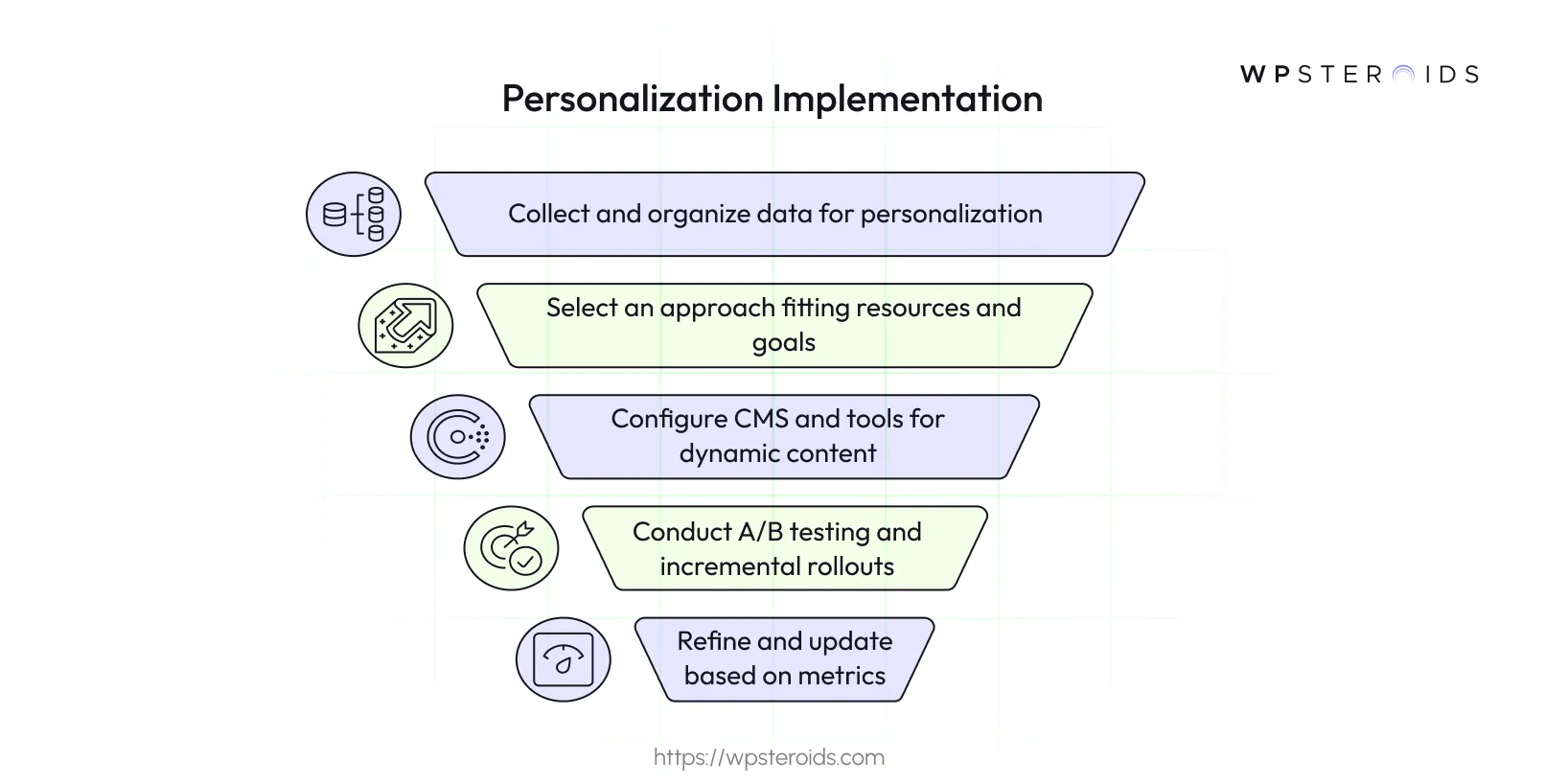
Integrate with Contentful
- CMS Configuration: Set up Contentful to support dynamic content
- Create modular content models (e.g., “Hero Banner” modules with fields for headlines, images, and CTAs).
- Tag content for segmentation (e.g., label blog posts by topic like “vegan recipes” or “gluten-free”).
- Tool Integration: Connect third-party tools to enhance personalization
- Ninetailed: For no-code A/B testing and audience segmentation.
- Analytics Tools: Google Analytics or Mixpanel to track user behavior.
- CRM/CDP: Sync customer data from platforms like Salesforce or Segment.
Launch and Test
- Start small to minimize risks:
- A/B Testing: Compare variations (e.g., “Welcome 10% off” vs. “Free shipping on first order”).
- Incremental Rollouts: Test changes on 10% of users before full deployment.
Monitor and Optimize
- Personalization is an ongoing process
- Track KPIs: Use dashboards to monitor metrics like conversion rates or engagement.
- Refine Segments: Adjust audience groups based on new data (e.g., create a “high-spenders” segment).
- Update Content: Refresh banners, CTAs, or product recommendations quarterly.
Additional Tips to Enhance Contentful Personalization
Even with the right tools, success hinges on how you approach personalization. Below are actionable tips to refine your strategy, avoid pitfalls, and maximize results.
Prioritize Privacy Compliance
With growing concerns over data misuse, respecting user privacy is non-negotiable.
- Follow Regulations
- GDPR (Europe): Obtain explicit consent before collecting data (e.g., cookie banners with clear opt-in options).
- CCPA (California): Allow users to request data deletion or opt out of tracking.
- Transparency
- Clearly explain what data you collect and how it’s used. For example, add a “Why am I seeing this?” link next to personalized recommendations.
- Limit Data Collection: Avoid gathering unnecessary details. If you don’t need a user’s birthdate for personalization, don’t ask.
Start Small, Scale Gradually
Jumping into complex campaigns can lead to wasted resources. Instead:
- Run Pilot Campaigns
- Test personalization on a single channel or audience. For example:
- Create geo-targeted landing pages for users in specific cities.
- Personalize email subject lines for a segment of inactive users.
- Measure Impact
- Track metrics like conversion rates or engagement during the pilot.
- If a geo-targeted campaign boosts conversions by 15%, expand it to more regions.
- Learn and Iterate
- Use insights from small tests to refine larger campaigns.
Leverage AI for Efficiency
AI tools reduce manual work and improve accuracy:
- Automate Segmentation: Let AI group users based on behavior (e.g., “frequent shoppers,” “price-sensitive visitors”).
- A/B Testing at Scale: Tools like Ninetailed test thousands of content variations automatically, identifying top performers.
- Dynamic Content Delivery: AI adjusts headlines, images, or CTAs in real time (e.g., showing raincoats to users in storm-prone areas).
Continuously Update Customer Profiles
User preferences change over time—your data should too.
- Refresh Data Regularly:
- Send quarterly surveys to update preferences (e.g., “Are you still interested in vegan recipes?”).
- Track behavioral shifts (e.g., a user who switched from buying fitness gear to baby products).
- Prune Outdated Data:
- Remove inactive users or irrelevant segments (e.g., customers who haven’t engaged in 12 months).
Pros and Cons of Contentful Personalization
Pros
- Scalability
Contentful’s cloud-based infrastructure allows businesses to manage millions of personalized interactions without performance issues. This scalability ensures consistent performance even during traffic spikes, such as holiday sales or product launches.
- Flexibility
The platform’s composable architecture (a modular system that lets you mix tools and content) supports hybrid strategies. This flexibility extends to omnichannel campaigns, where content created in Contentful adapts seamlessly to websites, apps, emails, and in-store displays.
- ROI-Driven
Personalization directly impacts revenue by making content more relevant. Pets Deli saw a 51% increase in conversions after using Contentful’s AI tools to personalize discounts for first-time buyers and loyal customers. These results stem from reduced guesswork—data-driven content resonates better, lowering bounce rates and increasing engagement.
Cons
- Implementation Complexity
Advanced features, like AI-driven hyper-personalization, require technical expertise. Setting up machine learning models or integrating third-party tools (e.g., CRMs, analytics platforms) can be challenging for teams without developer support. Small businesses might need to invest in training or hire specialists to maximize the platform’s potential.
- Data Privacy Risks
While Contentful offers encryption and compliance tools (e.g., GDPR-ready consent management), businesses must still navigate ethical data usage. Over-collecting data or failing to anonymize user information can erode trust. For example, overly specific ads (e.g., targeting users based on sensitive health data) might alienate customers.
- Cost Considerations
Premium features like Ninetailed’s AI tools can strain budgets for small-to-midsize businesses (SMBs). While Contentful offers tiered pricing, scaling to enterprise-level personalization may require significant investment. SMBs can start with basic rules-based campaigns and gradually adopt AI tools as they grow.
Conclusion
Contentful bridges content management and customer experience by enabling dynamic, data-driven personalization, where success hinges on quality data, strategic experimentation, and ethical practices.
Looking ahead, advancements in AI will automate complex tasks like predicting customer needs, while predictive analytics will pre-optimize content for trends like seasonal demand.
Tighter CMS integrations will streamline workflows, reducing manual effort and fostering creativity. In today’s competitive scenario, personalization is no longer optional—it’s essential for differentiation.








